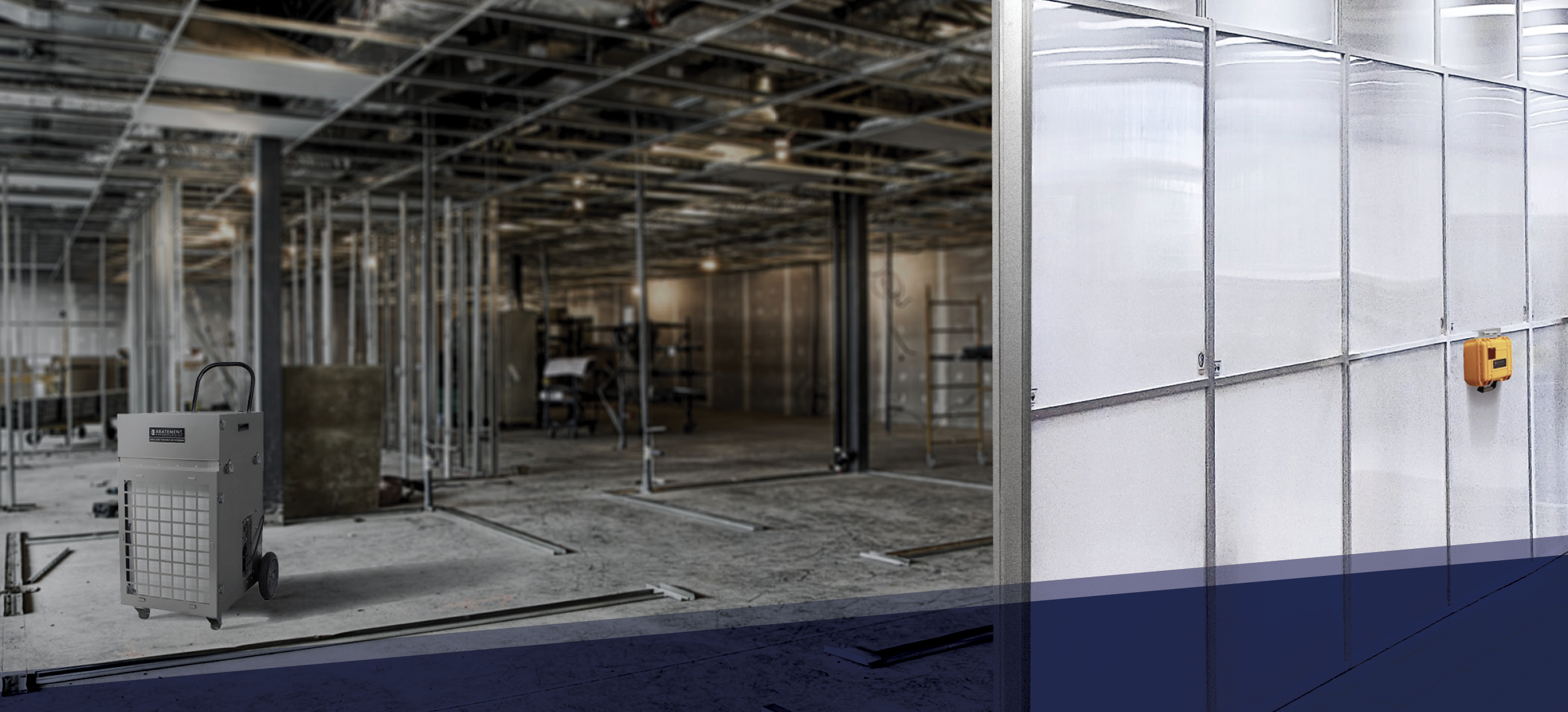SHIELD WALL™ CONNECT: BUILDING TO NEW HEIGHTS
Abatement Technologies® is pleased to introduce SHIELD WALL™ CONNECT, our latest innovation in temporary modular containment and an exciting addition to our SHIELD WALL™ family.
Construction and renovation projects in busy spaces like airports, retail centers, or offices require containment solutions that minimize disruption, ensure safety, and can be quickly deployed and removed. SHIELD WALL™ CONNECT meets these challenges head-on.
TEMPORARY WALLS VERSUS POLY SHEETING: THE SUPERIOR CHOICE IN CONSTRUCTION CONTAINMENT
Safely containing dust, noise, and contaminants during construction and renovation projects in public spaces demands a reliable barrier. Both temporary containment walls and poly sheeting are potential solutions, but poly sheeting falls short in many crucial areas where temporary walls shine.
HOSPITAL SURGE CAPACITY READINESS: KEEPING PATIENTS SAFE WITH CONTAINMENT SOLUTIONS (ICRA 2.0)
Infection control risk assessment (ICRA) requirements call for six feet of spatial separation between infected sources and susceptible hosts, so building cubicles and barriers may be necessary in waiting rooms, triage areas, and treatment spaces. In addition, it's best practice to use single-bed rooms for patients whenever possible. When single rooms aren’t available it's important to ensure the same ICRA spatial separation recommendations are met.
SEVEN WAYS TO USE SHIELD WALL™ FOR TEMPORARY CONTAINMENT
At Abatement Technologies, our SHIELD WALL™ containment solution has been successful in a wide range of commercial construction projects–both inside and outside of healthcare. Here’s a quick look at some examples of how industry experts are leveraging SHIELD WALL™ temporary walls to protect people from airborne contaminants during construction in occupied settings.
ICRA 2.0 - CONTROLLING THE SPREAD OF HAIS DURING CONSTRUCTION IN CRITICAL HEALTHCARE ENVIRONMENTS
Each year, thousands of patients fall victim to healthcare-associated infections (HAIs) caused by dust and other airborne contaminants released during construction activities. To support patient safety, the Center for Disease Control and Prevention (CDC) has created requirements for healthcare facilities to perform an Infection Control Risk Assessment (ICRA) before any renovation, construction, or maintenance project begins.
KEY TOOLS FOR MOLD REMEDIATION AND AIR QUALITY
While molds are an important part of the environment, their growth indoors can cause serious health problems. Unexpected events, like leaks from pipes and flooding from storms, can create standing water which allows mold to grow in just 24 to 48 hours. Because of its fast spread, mold can be nearly impossible to prevent. That’s why it's important to focus on controlling its path—in the safest possible way.
FOUR FAQS ABOUT TEMPORARY CONTAINMENT WALL SYSTEMS
Some frequently asked questions about temporary containment walls to aid in understanding and implementing effective containment solutions.
RENTING VS. BUYING TEMPORARY CONTAINMENT WALLS
Temporary modular containment walls offer a variety of benefits to commercial construction and renovation projects, from an aesthetically pleasing appearance to a more efficient set-up. Modular containment systems can be installed significantly faster than traditional methods, saving time and reducing labor costs. These reusable walls are constructed with eco-friendly materials, meaning less waste and faster cleanup at the end of a project.
HOW TO CLEAN, DECONTAMINATE, AND DISASSEMBLE ABATEMENT TECHNOLOGIES’ SHIELD WALL™
Cleaning the SHIELD WALL™ involves regular disinfecting while in use and decontamination before and after transportation.
THE TOOLS FOR ASBESTOS ABATEMENT
the use of asbestos in products and materials is restricted in the United States, but not banned. Canada, however, has regulations in place that prohibit the import, sale, and use of asbestos and products containing the dangerous carcinogen.
THE SECRETS OF NEGATIVE PRESSURE CONTAINMENT
While renovation and maintenance projects may pose little more than an inconvenience to homeowners, they require special attention in healthcare facilities because of the danger that airborne particles, spores, and pathogens released into the air by construction pose to patients.
CRITICAL ENVIRONMENT PROTECTION
Learn about how our dust control and air purification products can help maintain a productive indoor environment during construction in government facilities, office buildings, schools & universities, retail operations, storage facilities and manufacturing operations.
REUSABLE MODULAR WALLS : THE NEW STANDARD
Five Reasons Reusable Modular Walls are Becoming the Standard for Temporary Dust Barrier Walls













